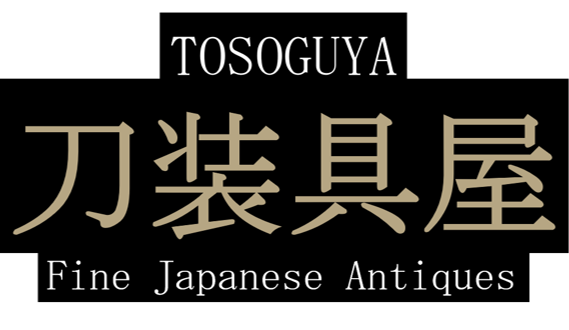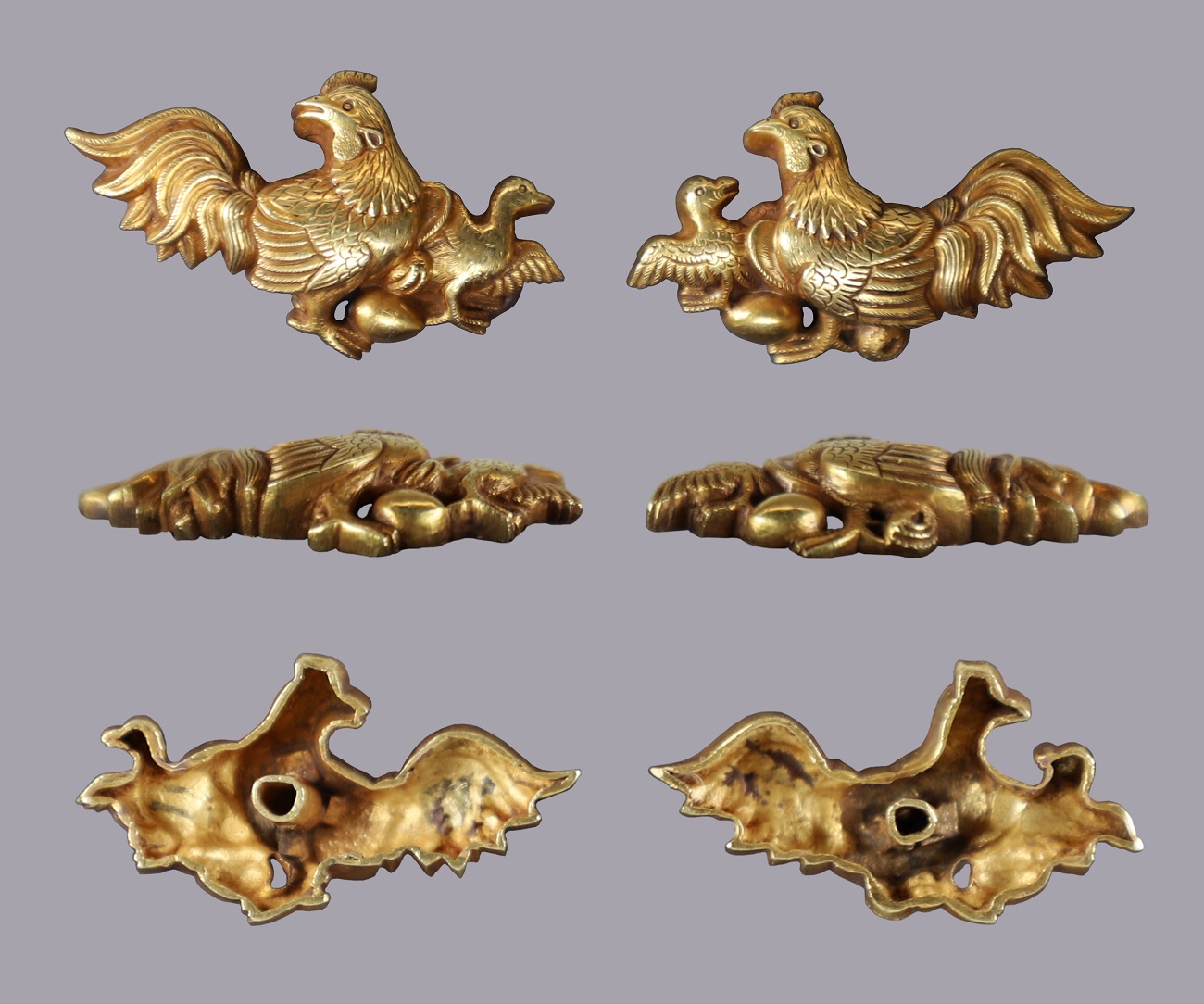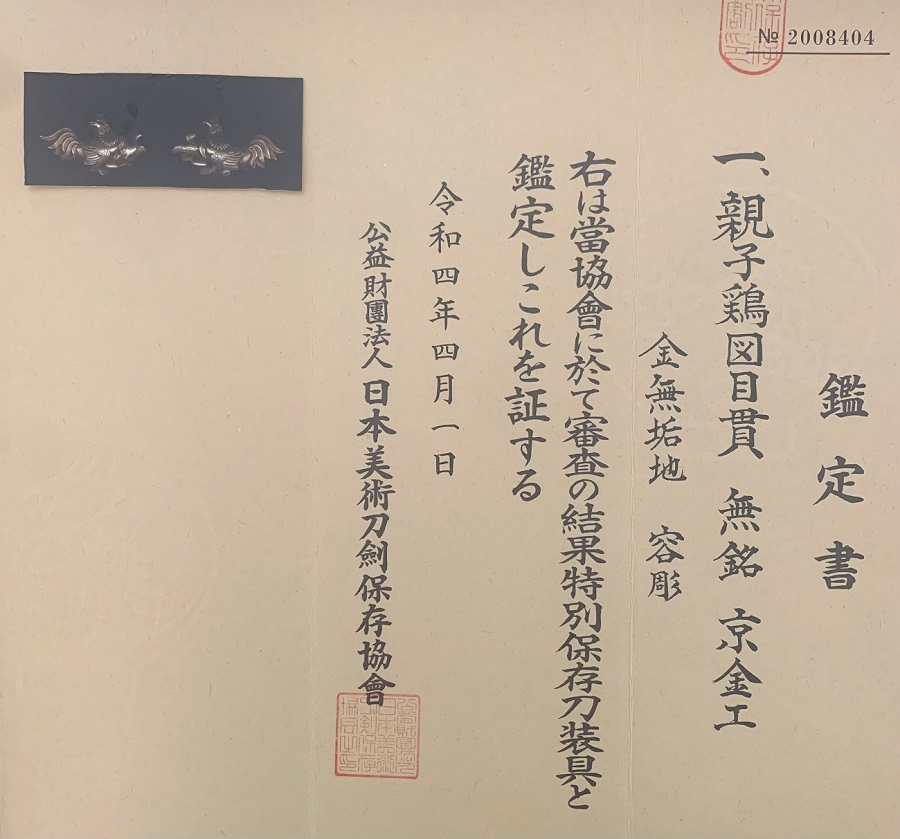

Very robust, well carved solid gold menuki of parent-and-child chicken motif or Oyakodori-zu (親子鶏図). The menuki are carved in a technique known as Katachi-bori (容彫), whereby the subject itself becomes the outline of the menuki, and fine surface carving and finishing from the front. The menuki have considerable height, and are thick-walled. The retention posts on the back are unusual in that they are both long hollow posts, termed in-kon (陰根).
The parent-child chicken motif in Japanese symbolizes abundance and prosperity, and became a popular image during the Edo period. The birds represented are likely the decorative Chabo chickens, with high, ornamental tail feathers and short stubby legs. Kyō-kinkō works were those made in Kyōtō, and often were associated with higher quality standards, aligned with the more refined aesthetic of the cultural capital of Japan. Many Kyō- artists evolved from the key foundation schools such as the Gōtō, Umetada, Nara, among others. Indeed, this set of menuki is highly reminiscent of contemporary Gōtō works, with purposeful carving which extends around the edges, giving the desired 3D-fullness or niku to the motif.
Translation of the Tokubetsu Hozon paper description follows:
親子鶏図目貫 (Oyakodori-zu menuki)
無銘 京金工 (Mumei Kyō-kinkō)
金無垢地 (Kin-Mukuji)
容彫 (Katachi-bori)
Reiwa 4th year (2022) April 1st
Measurements: 3.2cm x 1.8cm x 0.7cm
Weight: 9.0 grams (both menuki)
Edo Period (江戸時代), 17th - 18th century
$1,100

